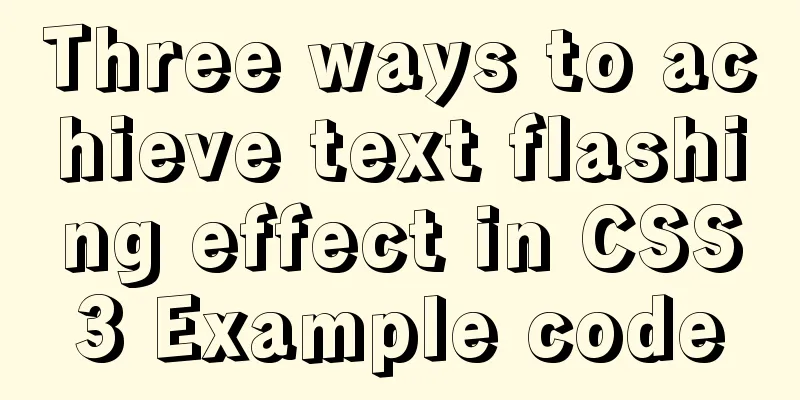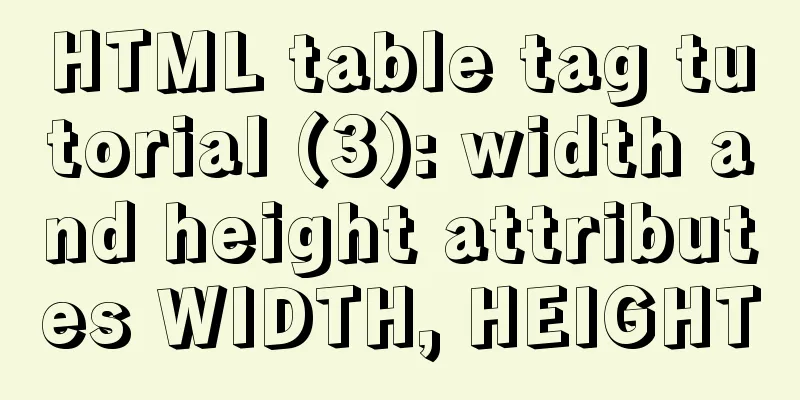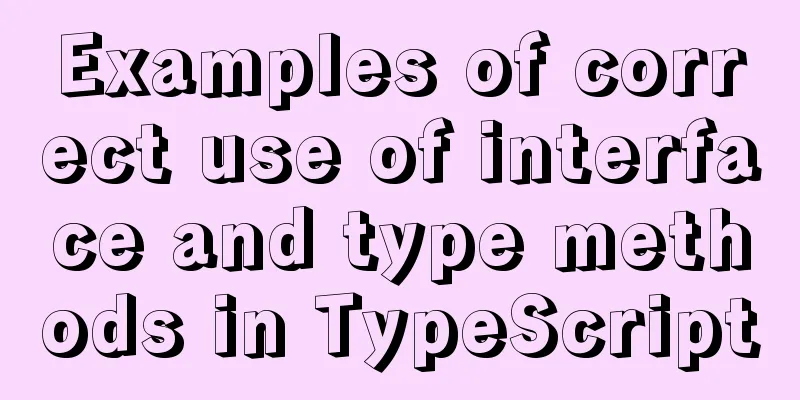Vue implements form validation function

|
This article mainly describes how to implement form validation based on NUXT's validate method. After encapsulating the verification method, you only need to use one line of code like: rules="filter_rules({required:true,type:'mobile'})" to implement verification on the page. First, let's look at the implementation effect
1. Create a new validate.js file: This document contains some required validation rules. Let's look at the code directly below:
/**
* Created by jiachenpan on 16/11/18.
**/
export function isvalidUsername (str) {
const valid_map = ['admin', 'editor']
return valid_map.indexOf(str.trim()) >= 0
}
// Non-negative number export function noFuNumber (str) {
const reg = /^\d+(\.{0,1}\d+){0,0}$/
return reg.test(str)
}
// Mobile phone number export function isvalidMobile (str) {
const reg = /^1(3|4|5|7|8)\d{9}$/
return reg.test(str)
}
// Chinese, English, numbers export function regexn (str) {
const reg = /^[\u4e00-\u9fa5_a-zA-Z0-9]+$/
return reg.test(str)
}
/* Legal URI */
export function validateURL (textval) {
const urlregex = /^(https?|ftp):\/\/([a-zA-Z0-9.-]+(:[a-zA-Z0-9.&%$-]+)*@)*((25[0-5]|2[0-4][0-9]|1[0-9]{2}|[1-9][0-9]?)(\.(25[0-5]|2[0-4][0-9]|1[0-9]{2}|[1-9]?[0-9])){3}|([a-zA-Z0-9-]+\.)*[a-zA-Z0-9-]+\.(com|edu|gov|int|mil|net|org|biz|arpa|info|name|pro|aero|coop|museum|[a-zA-Z]{2}))(:[0-9]+)*(\/($|[a-zA-Z0-9.,?'\\+&%$#=~_-]+))*$/
return urlregex.test(textval)
}
/* lowercase letters*/
export function validateLowerCase (str) {
const reg = /^[az]+$/
return reg.test(str)
}
/* uppercase letter*/
export function validateUpperCase (str) {
const reg = /^[AZ]+$/
return reg.test(str)
}
/* Uppercase and lowercase letters*/
export function validateAlphabets (str) {
const reg = /^[A-Za-z]+$/
return reg.test(str)
}
/**
* validate email
* @param email
* @returns {boolean}
*/2. Create a new filter_rules.js file: This document contains validation callback functions and validation fields. Attached code:
import { isvalidMobile, regexn, noFuNumber } from '@/utils/validate'
export default {
install (Vue) {
/**
* Note: When defining type rules, you do not need to do non-empty validation. * You only need to pass in required:true. * /
/* Check if the number is non-negative */
const isnoFuNumber = (rule, value, callback) => {
if (value != null && value !== '') {
if (!noFuNumber(value)) {
callback(new Error('Please enter a non-negative number!'))
} else {
callback()
}
} else {
callback()
}
}
/* Verify phone number*/
const isvalidateMobile = (rule, value, callback) => {
if (value != null && value !== '') {
if (!isvalidMobile(value)) {
callback(new Error('Please enter a correct mobile phone number!'))
} else {
callback()
}
} else {
callback()
}
}
/* Contains illegal characters (only Chinese, English, and numbers can be entered) */
const isvalidateRegexn = (rule, value, callback) => {
if (value != null && value !== '') {
if (!regexn(value)) {
callback(new Error('Contains illegal characters (only Chinese, English, and numbers can be entered)!'))
} else {
callback()
}
} else {
callback()
}
}
/* Please enter a positive integer*/
// const isvalidateInteger = (rule, value, callback) => {
// if (value != null && value != "") {
// if (!integer(value)) {
// callback(new Error('Please enter a positive integer!'))
// } else {
// callback()
// }
// }
// else {
// callback();
// }
// }
/**
* Parameter item
* required true Required field* maxLength Maximum length of the string* min and max must be given at the same time min < max type=number
* type mobile phone number
* Email
* URL
* Various custom type definitions are continuously added in src/utils/validate.......
* */
Vue.prototype.filter_rules = function (item) {
let rules = []
if (item.required) {
rules.push({ required: true, message: 'This input is required!', trigger: 'blur' })
}
if (item.maxLength) {
rules.push({ min: 1, max: item.maxLength, message: 'Enter at most' + item.maxLength + 'characters!', trigger: 'blur' })
}
if (item.min && item.max) {
rules.push({ min: item.min, max: item.max, message: 'The character length is between ' + item.min + ' and ' + item.max + '!', trigger: 'blur' })
}
if (item.type) {
let type = item.type
switch (type) {
// case 'email':
// rules.push({ type: 'email', message: 'Please enter a valid email address', trigger: 'blur,change' })
// break isnoFuNumber
case 'activeOrder':
rules.push({ validator: isnoFuNumber, trigger: 'blur' })
break
case 'mobile':
rules.push({ validator: isvalidateMobile, trigger: 'blur' })
break
case 'name':
rules.push({ validator: isvalidateRegexn, message: 'Please enter a valid user name', trigger: 'blur' })
break
case 'password':
rules.push({ validator: isvalidateRegexn, message: 'Please enter your password', trigger: 'blur' })
break
case 'org_name':
rules.push({ validator: isvalidateRegexn, message: 'Organization name cannot contain special characters', trigger: 'blur' })
break
default:
rules.push({})
break
}
}
return rules
}
}
}3. Introduce in the page: import Validate from '@/utils/filter_rules' 4. Use verification in the page: The validation rules need to be written in the el-form-item tag.
It should be noted that:
The names of these three places should be written consistently. The above is the full content of this article. I hope it will be helpful for everyone’s study. I also hope that everyone will support 123WORDPRESS.COM. You may also be interested in:
|
<<: Ubuntu 20.04 Best Configuration Guide (Newbie Essential)
>>: Which is faster among MySQL full-text index, joint index, like query, and json query?
Recommend
Example analysis of mysql variable usage [system variables, user variables]
This article uses examples to illustrate the usag...
Setting up Docker proxy under CentOS 7 (environment variable configuration of Systemd service under Linux)
The Docker daemon uses HTTP_PROXY , HTTPS_PROXY ,...
Detailed explanation of process management in Linux system
Table of contents 1. The concept of process and t...
Implementation code for adding links to FLASH through HTML (div layer)
Today a client wants to run an advertisement, and ...
MySQL can actually implement distributed locks
Preface In the previous article, I shared with yo...
Detailed tutorial on installing mysql-8.0.13 (zip installation) on windows 10 system
Installation Environment Description •System vers...
Pure CSS to achieve a single div regular polygon transformation
In the previous article, we introduced how to use...
Explain TypeScript mapped types and better literal type inference
Table of contents Overview Using mapped types to ...
Web Design: When the Title Cannot Be Displayed Completely
<br />I just saw the newly revamped ChinaUI....
Implementation of docker-compose deployment project based on MySQL8
1. First, create the corresponding folder accordi...
MYSQL A question about using character functions to filter data
Problem description: structure: test has two fiel...
React Native startup process detailed analysis
Introduction: This article takes the sample proje...
Detailed explanation of various types of image formats such as JPG, GIF and PNG
Everyone knows that images on web pages are genera...
Implementation of CSS heart-shaped loading animation source code
Without further ado, let me show you the code. Th...
MySQL briefly understands how "order by" works
For sorting, order by is a keyword we use very fr...












